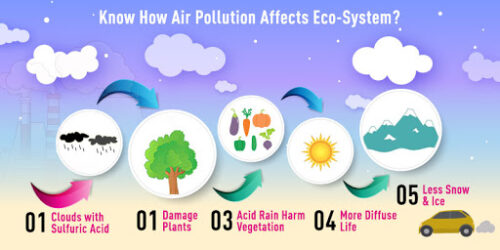WORLD Environment Day today has kick-started a decade of ecosystem restoration. As a global host for World Environment Day, 2021, it is an important opportunity for Pakistan to revisit environmental priorities that it has followed for the last 50 years and reset the direction for the decade ahead.
The 1972 Stockholm Declaration inspired Zulfiqar Ali Bhutto to begin Pakistan’s environmental journey. The Declaration laid down the principle that the earth’s carrying capacity must be protected. Within two years, the Environment and Urban Affairs Division was established. Instead of focusing on the 26 principles adopted in Stockholm, however, the Urban Affairs Division focused primarily on the ‘brown’ environment agenda that included building environmental standards for industrial discharges and effluents, ambient air quality, and solid waste management. Success in this required developing standards, legislation, regulatory institutions, tribunals and the capacity to monitor compliance by the private sector. The government, on its part, has rarely submitted its conduct to environmental scrutiny. This is where we have been standing for the last half century — brown sahibs penalising the non-compliant weaker players.
The ‘brown’ agenda focused mostly on urban priorities — water and air pollution, sanitation, industrial effluents and discharges, waste, and recycling — and failed miserably on almost all counts notwithstanding some important successes. Mostly overlooked was the ‘green’ environment that typically protects ecosystems by focusing on species, wildlife, biodiversity, water bodies, soils, and other natural resources to provide municipal or environmental services by way of drinking water, sewerage systems, waste collection and parks and other community spaces.
We instead allowed the regenerative capacity of ecosystems to deteriorate and economic value to dissipate. The country’s first environmental legislation by Gen Zia in 1983 deepened the divide when the Pakistan Environment Protection Ordinance formally separated the nation’s development and environment agendas. This fragmentation deepened as successive governments shelved most environmental ambitions one after the other.
The Ministry of Environment and its successor the Ministry of Climate Change until very recently rarely attended to ‘green’ environment issues despite a powerful argument in 1992 by the National Conservation Strategy to focus on 14 programme areas for action centred on the health of ecosystems. It urged the government to also pay attention to maintaining the soil in croplands, increasing efficiency of irrigation, protecting watersheds, supporting forestry and plantations, restoring rangelands and improving livestock, protecting water bodies and sustaining fisheries, conserving biodiversity, increasing energy efficiency, managing population growth, developing and deploying renewable resources, supporting institutions to manage common resources and preserving cultural heritage.
Successive governments failed to democratise environmental processes or delve deep into these proposed green environmental issues. As a result, the environment ministry did not engage in any of the key global processes and social sector summits that informed the development of the Millennium Development Goals and later the Sustainable Development Goals. The country’s environmental ambition and impact continued to shrink. The environment ministry was the focal ministry for several multilateral environmental agreements and numerous protocols, but did not succeed in mainstreaming any of them despite their elaborate action plans.
After the mid-1990s, the interest in green environment issues waned further even though the environmental agenda had become visibly more complex and the country’s physical environment had deteriorated. The environment ministry ignored agriculture and land use, land-use change, and forestry (collectively known as LULUCF in climate change negotiations) that together are now responsible for half of Pakistan’s greenhouse gas emissions.
The 18th Constitutional Amendment formally devolved the mandate on environmental issues in 2010 to the provinces, resulting in the dissolution of the environment ministry later reincarnated as the Ministry of Climate Change. The lopsided focus on urban issues further skewed and constrained the priorities of provincial governments. It impaired their ability to mainstream environmental action. They failed to recognise the fact that improvements in urban human health would be for the most part a by-product of healthy ecosystems.
Even though climate adaptation became a declared priority, the National Adaptation Plan or the sectoral and provincial adaptation plans were never developed. Instead, the environment departments that were initially legislated as Environment Protection Departments and charged to develop and ensure compliance, took it upon themselves to become policymakers as well as the regulators.
This blurred vision has continued to cloud Pakistan’s environmental direction. The National Climate Change Policy did not explicitly recognise the primacy that ecosystems hold for the slow onset of climate change or how land-degraded ecosystems make societies prone to climate-induced disasters. Instead, it offered a laundry list of scores of un-prioritised policy actions. Following NCCP, the Nationally Determined Contributions (NDCs) as well as many provincial policies fell short of recognising the central importance of healthy ecosystems for the well-being of our rapidly growing population. Except for the National Water Policy, proudly developed by the previous government and silently shelved by the present one, none of the approved or draft provincial climate, water, agriculture, disaster risk reduction or environment policies recognised the importance of prioritising ecosystem restoration. By ignoring ecosystem-based approaches, we have unnecessarily created a dual challenge for ourselves: integrating environment and development on the one hand and ‘mainstreaming’ environment in policy planning on the other.
The government has committed itself to an impressive agenda that seeks ecosystem restoration and protecting nature in order to generate positive spillovers in the economy, health, livelihoods and the quality of life. The list of new initiatives is long and constantly growing. Their sustainability, however, demands that the NCCP, NDC and provincial policy instruments are revised to anchor and embed ecosystem-based solutions and set the direction for the decade ahead. To rectify this critical lapse, the federal government should allocate necessary resources from the Rs900 billion PSDP budget earmarked for FY 2021-22.
Finally, the ecosystem-based approaches stem from democratic norms and the principles of sustainable development. They must firmly be based on direct engagement and ownership of communities. Let’s recognise that it is only the local governments who can have abiding stakes in protecting local environmental assets. Rather than outsourcing ecosystems to land grabbers and mafias, Pakistan has to find ecosystem champions at the local level by reviving local governments.





